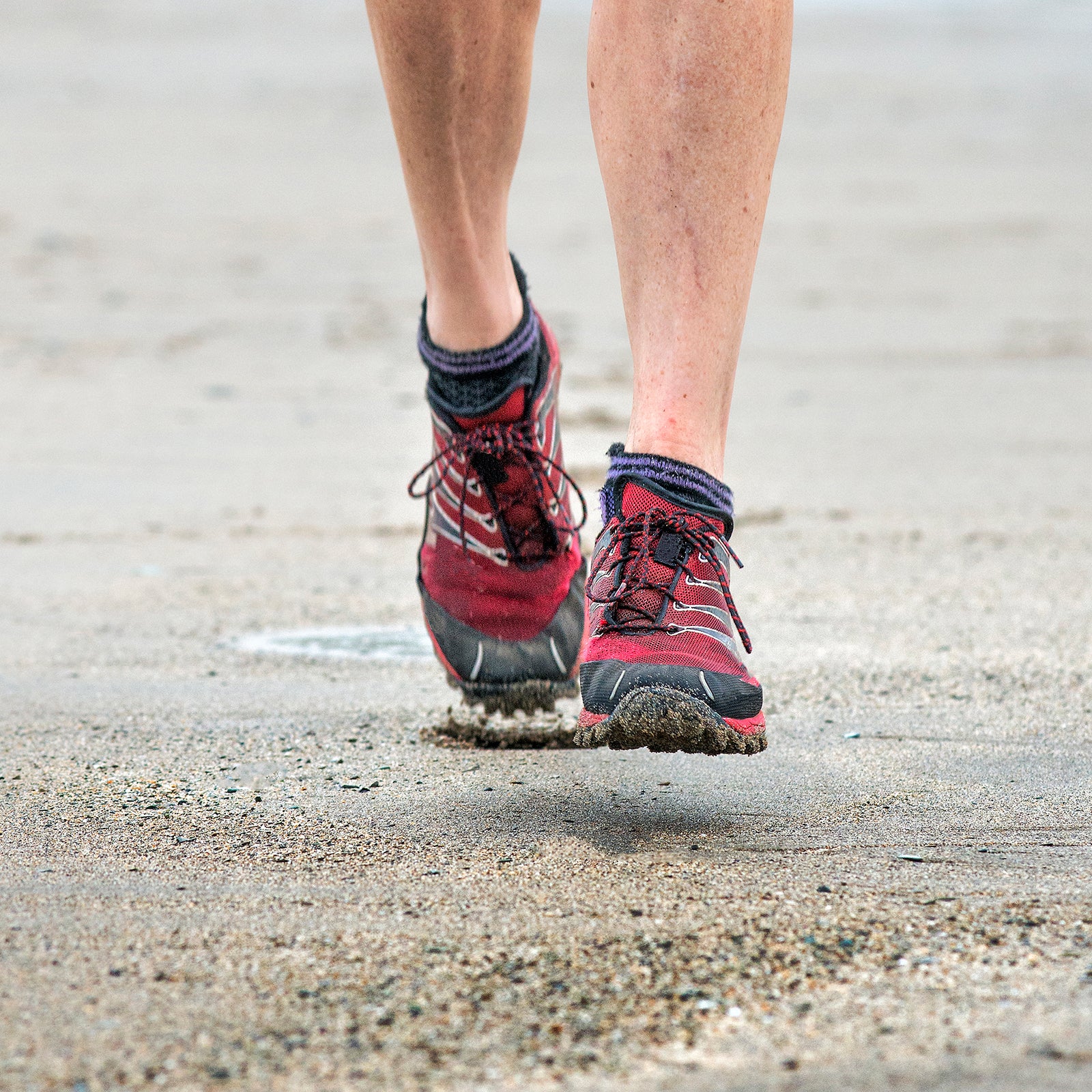WeŌĆÖve all been there: a couple miles into what was supposed to be a long outing on the trail, you feel the hot spot burning inside your shoe. A damn blister. Maybe youŌĆÖre in ill-fitting new shoes or bunchy socks that caused your feet to sweat. Maybe you just have blister-prone feet. Either way, a skin bubble can put an end to an otherwise great dayŌĆöor lead to some serious discomfort. DonŌĆÖt despair:╠²we called up John Vonhof, author of ╠²($20, Wilderness Press),╠²first published in 1997 and now in its sixth edition. Vonhof is a former paramedic and an ultrarunner who now works╠²the medical tents at races like CaliforniaŌĆÖs 100-mile Western States Endurance Run╠²and╠²the Badwater 135, as well as╠²,╠²a series of ten back-to-back Ironmans in New Orleans.╠²He gave us his best advice on blister prevention and treatment.
Take Blisters Seriously
They always╠²seem tiny and innocuous, but they can be day enders. ŌĆ£Even a blister the size of a pea in the wrong spotŌĆöat the base of the toe╠²or ball of the footŌĆöcan disrupt your gait, meaning pain could╠²go up into your knees or your back,ŌĆØ says Vonhof. ŌĆ£Blisters can seem very minor, but if you donŌĆÖt take care of them, they can get larger.ŌĆØ He has seen instances where a runner pushed on through a hot spot,╠²not bothering to stop and treat it, and instead of a quarter-inch inflammation, the runner was left with a two-inch bulge covering╠²the whole arch of their foot. Once ripped, a╠²blister leaves a huge patch of raw, exposed skin rubbing the inside of the shoeŌĆönot a comfortable situation.
Know the Causes
ItŌĆÖs generally understood that pressure, friction, heat, or moisture can cause blisters to form. When layers of skin and bones move against each other, the inner connections can╠²break down, and╠²a fluid-filled cavity forms. There are a few simple rules to help avoid blister-causing situations. ŌĆ£The most important thing is fit,ŌĆØ╠²Vonhof says. Not enough room in the toe box or too much space in the heel can cause pinching or shifting. Also, Vonhof says,╠²ŌĆ£Skip the cotton socks.ŌĆØ Technical, breathable╠²wicking blends that stay in place are key. We can recommend a few:╠²╠²socks╠²prevent╠²clamminess and eliminate╠²friction,╠² makes a collection of socks for runners╠²that keep your feet moisture-free, and╠²ŌĆÖs toe socks keep your digits from rubbing.╠²Mileage matters, too.╠²If you try to run 50 miles off the couch, youŌĆÖll probably wind up with blisters. But steadily add distance with a training plan and your feet will thank you.
Prep Your Feet
Proper foot care means good preparation, according to Vonhof. Before a big run or hike, he╠²recommends reducing calluses, trimming and filing toenails, and getting proper insoles for╠²your shoes. If youŌĆÖre racing long distances, plan to change your socks often, air your feet out at regular rest stations, and carry a foot-care kit (Trail Toes makes a prepackaged ). If you clench your toes, work to relax your feet while running. If youŌĆÖre prone to blisters or are running ultramarathons, taping problem areas╠²in advance might be a good idea. At Badwater, Vonhof regularly pretapes the entire bottom of a runnerŌĆÖs foot, and he recommends╠² since it stays put and molds easily. If youŌĆÖre running in wet conditions or your dogs╠²tend to sweat, apply a layer of protective, moisture-managing cream, like╠², before putting on your socks. Vonhof likes╠² for slathering between toes or on heels to prevent╠²irritation.
Ditch the Moleskin
People used to rub Vaseline on a blister, then cover it with a doughnut-shaped piece of moleskin. These days, Vonhof prescribes lancing. ŌĆ£ItŌĆÖs a debate. Should you lance the blister and get the fluid out or leave it?ŌĆØ Vonhof says. ŌĆ£Sometimes itŌĆÖll pop on its own. If itŌĆÖs in an area where youŌĆÖre going to continue to put pressure on it while you run or hike, youŌĆÖre better off lancing it.ŌĆØ To do that, he recommends cleaning╠²the skin first, then piercing╠²it in two places with a sterile pin or needleŌĆöa safety pin, tweezers, or pocketknife sterilized with a flame or vodka will work. Gently push the fluid out. (Gravity will also help the blister drain.) Then apply an antibiotic ointment, like , and put╠² or over the top. Standard Band-Aids donŌĆÖt stick well and tend to shift.


